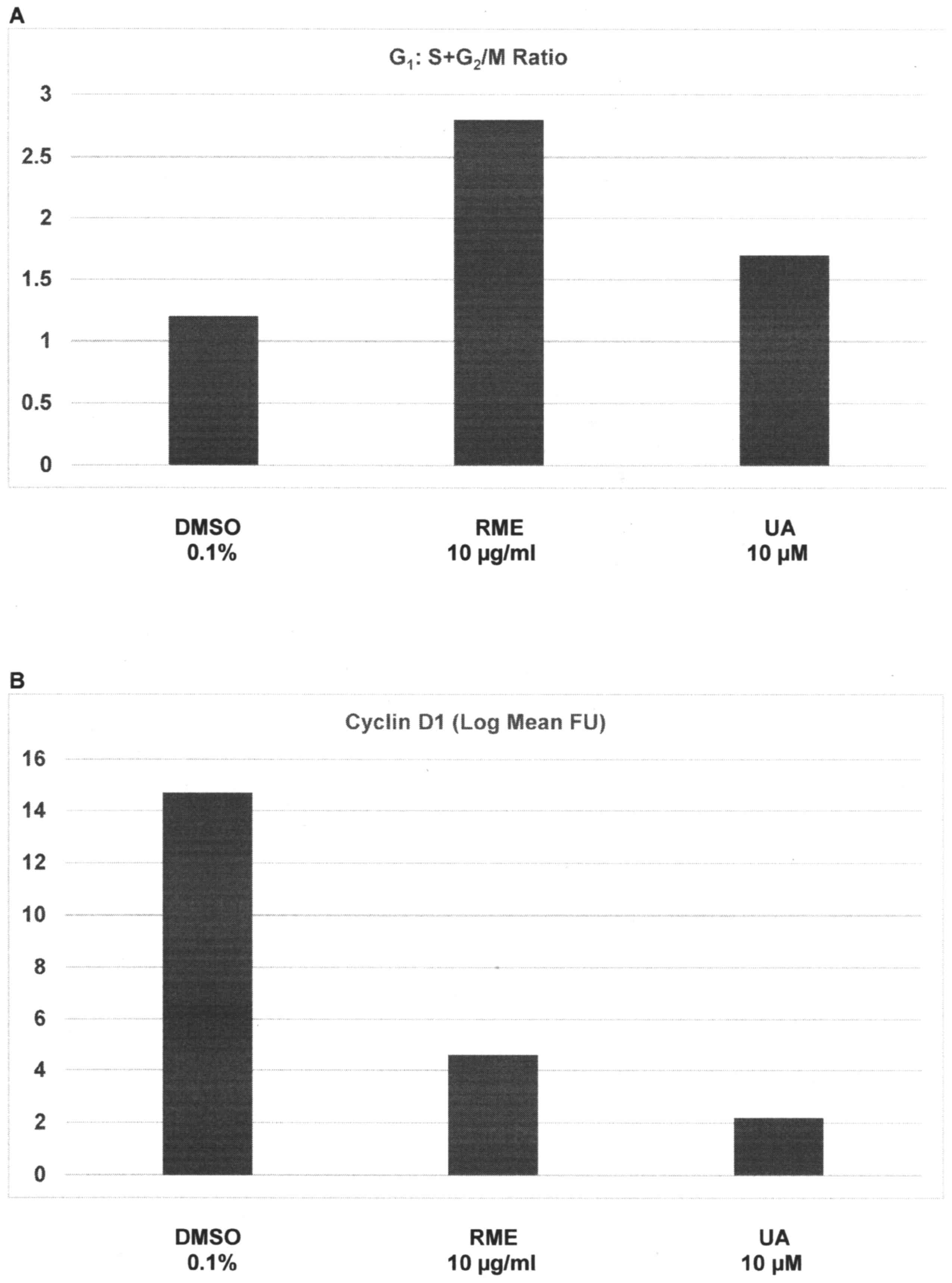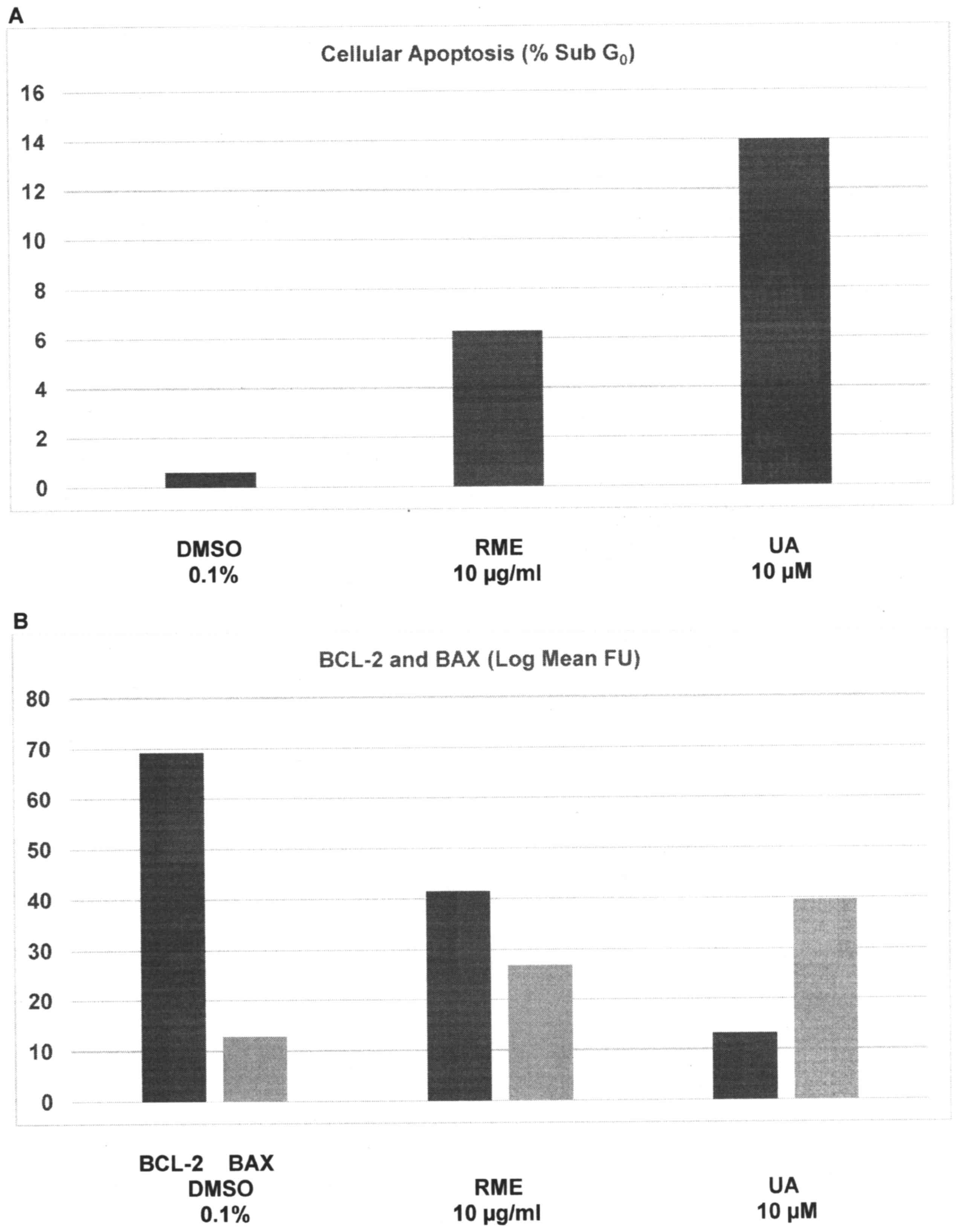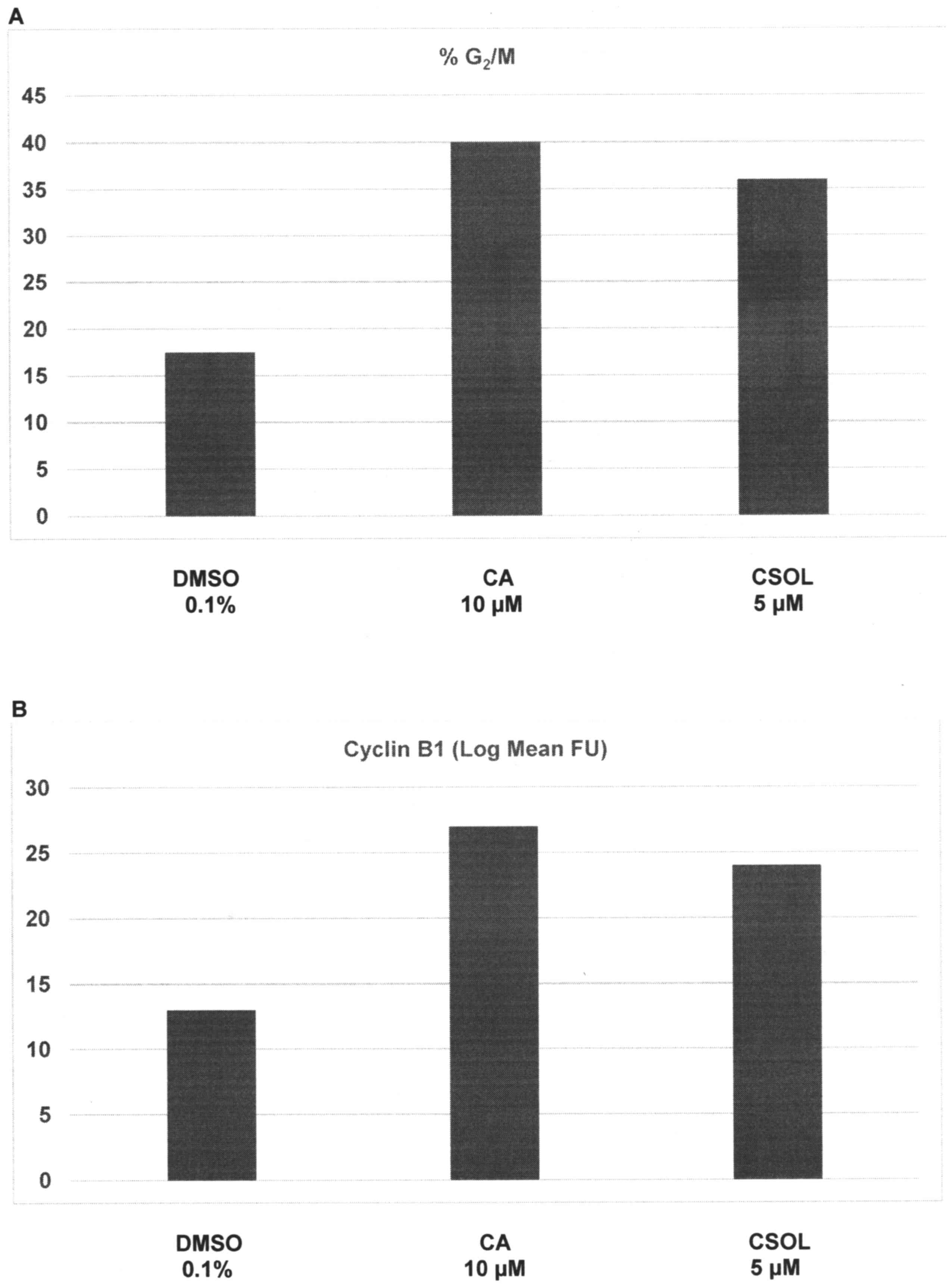|
1
|
Sorlie T, Perou CM, Tibshirani R, Aas T,
Geisler S, Johnsen H, Hastie T, Eisen MB, vande Rijn M, Jefrrey SS,
et al: Gene expression patterns in breast carcinomas distinguish
tumor subclasses with clinical implications. Proc Natl Acad Sci
USA. 98:10869–10874. 2001. View Article : Google Scholar : PubMed/NCBI
|
|
2
|
Pierce JH, Arnstein P, DiMarco E, Artrip
J, Kraus MH, Lonardo F, DiFiore PP and Aaronson SA: Oncogenic
potential of erB-2 in human mammary epithelial cells. Oncogene.
6:1189–1194. 1991.PubMed/NCBI
|
|
3
|
Telang NT, Narayanan R, Bradlow HL and
Osborne MP: Coordinated expression of intermediate markers for
tumorigenic transformation in Ras transfected mouse mammary
epithelial cells. Breast Cancer Res Treat. 18:155–163. 1991.
View Article : Google Scholar : PubMed/NCBI
|
|
4
|
Telang NT, Osborne MP, Sweterlitsch L and
Narayanan R: Neoplastic transformation of mouse mammary epithelial
cells by deregulated myc expression. Cell Regul. 1:863–872. 1990.
View Article : Google Scholar : PubMed/NCBI
|
|
5
|
Johnston SRD and Dowsett M: Aromatase
inhibitors for breast cancer: Lessons from the laboratory. Nat Rev
Cancer. 3:821–831. 2003. View
Article : Google Scholar : PubMed/NCBI
|
|
6
|
Romond EH, Perez EA, Bryant J, Suman VJ,
Geyer CE Jr, Davidson NE, Tan-Chiu E, Martino S, Paik S, Kaufman
PA, et al: Trastuzumab plus adjuvant chemotherapy for operable
HER-2 positive breast cancer. N Engl J Med. 353:1673–1684. 2005.
View Article : Google Scholar : PubMed/NCBI
|
|
7
|
Baselga J and Swain SM: Novel anti-cancer
targets: Revisiting ERB2 and discovering ERB3. Nat Rev Cancer.
9:463–475. 2009. View
Article : Google Scholar : PubMed/NCBI
|
|
8
|
Lee KW, Bode AM and Dong Z: Molecular
targets of phytochemicals for cancer prevention. Nat Rev Cancer.
11:211–218. 2011. View
Article : Google Scholar : PubMed/NCBI
|
|
9
|
Ye I, Jia Y, JI KE, Sanders AJ, Xue K, Ji
J, Mason MD and Jiang WG: Traditional Chinese medicine in the
prevention and treatment of breast cancer and cancer metastasis.
Oncol Lett. 10:1240–1250. 2015. View Article : Google Scholar : PubMed/NCBI
|
|
10
|
Subbaramaiah K, Chung WJ, Michaluart P,
Telang N, Tanabe T, Inoue H, Jang M, Pezzuto JM and Dannenberg AJ:
Resveratrol inhibits cyclo-oxygenase-2 transcription and activity
in phorbol ester treated human mammary epithelial cells. J Biol
Chem. 273:21875–21882. 1998. View Article : Google Scholar : PubMed/NCBI
|
|
11
|
Katdare M, Osborne MP and Telang NT: Soy
isoflavone genestein modulates cell cycle progression and induces
apoptosis in HER2/neu oncogene expressing human breast epithelial
cells. Int J Oncol. 21:809–815. 2002.PubMed/NCBI
|
|
12
|
Katdare M, Osborne MP and Telang NT: Novel
cell culture models for prevention of human breast cancer (Review).
Int J Oncol. 22:509–515. 2003.PubMed/NCBI
|
|
13
|
Jinno H, Steiner MG, Nason-Burchenal K,
Osborne MP and Telang NT: Preventive efficacy of receptor class
selective retinoids on HER-2/neu oncogene expressing pre-neoplastic
human mammary epithelial cells. Int J Oncol. 21:127–134.
2002.PubMed/NCBI
|
|
14
|
Subbaramaiah K, Michaluart P, Sporn MB and
Dannenberg AJ: Ursolic acid inhibits cyclo-oxygenase-2
transcription in human mammary epithelial cells. Cancer Res.
60:2399–2404. 2000.PubMed/NCBI
|
|
15
|
Subbaramaiah K, Cole PA and Dannenberg AJ:
Retinoids and carnosol suppress cyclo-oxygenase-2 transcription by
CREB-binding protein/p300-dependent and -independent mechanisms.
Cancer Res. 62:2522–2530. 2002.PubMed/NCBI
|
|
16
|
Manez S, Recio MC, Giner RM and Ríos JL:
Effect of selected triterpenoids on chronic dermal inflammation.
Eur J Pharmacol. 334:103–105. 1997. View Article : Google Scholar : PubMed/NCBI
|
|
17
|
Huang MT, Ho CT, Wang ZY, Ferraro T, Lou
YR, Stauber K, Ma W, Georgiadis C, Laskin JD and Conney AH:
Inhibition of skin tumorigenesis by rosemary and its constituents
carnosol and ursolic acid. Cancer Res. 54:701–708. 1994.PubMed/NCBI
|
|
18
|
Stampfer MR and Bartley JC: Induction of
transformation and continuous cell lines from normal human mammary
epithelial cells after exposure to Benzo (α) pyrene. Proc Natl Acad
Sci USA. 82:2394–2398. 1985. View Article : Google Scholar : PubMed/NCBI
|
|
19
|
Zhai YF, Biettenmiller H, Wang B, Gould
MN, Oakley C, Esselman WL and Welsch CW: Increased expression of
specific tyrosine phosphatases in human breast epithelial cells
neoplastically transformed by the neu oncogene. Cancer Res.
53:2272–2278. 1993.PubMed/NCBI
|
|
20
|
Musgrove EA and Sutherland RL: Biological
determinants of endocrine resistance in breast cancer. Nat Rev
Cancer. 9:631–643. 2009. View
Article : Google Scholar : PubMed/NCBI
|
|
21
|
Wang J, Gildea JJ and Yue W: Aromatase
over-expression induces malignant changes in estrogen receptor-α
negative MCF-10A cells. Oncogene. 32:5233–5240. 2013. View Article : Google Scholar : PubMed/NCBI
|
|
22
|
Telang N: Putative cancer initiating stem
cells in cell culture models for molecular subtypes of clinical
breast cancer. Oncol Lett. 10:3840–3846. 2015. View Article : Google Scholar : PubMed/NCBI
|
|
23
|
Telang N: Growth inhibitory efficacy of
natural products in a model for triple negative molecular subtype
of clinical breast cancer. Biomed Rep. 7:199–204. 2017. View Article : Google Scholar : PubMed/NCBI
|
|
24
|
Plouzek CA, Ciolino HP, Clarke R and Yeh
GC: Inhibition of P-glycoprotein activity and reversal of multidrug
resistance in vitro by rosemary extract. Eur J Cancer.
35:1541–1545. 1999. View Article : Google Scholar : PubMed/NCBI
|
|
25
|
Kassi E, Sourlingas TG, Spiliotaki M,
Papoutsi Z, Prastinis H, Aligiannis N and Moutsatsou P: Ursolic
acid triggers apoptosis and BCL-2 down-regulation in MCF-7 breast
cancer cells. Cancer Investig. 27:723–733. 2009. View Article : Google Scholar
|
|
26
|
Lou J, Hu YL and Wang H: Ursolic acid
inhibits breast cancer growth by inhibiting proliferation, inducing
autophagy and apoptosis, and suppressing inflammatory responses via
the PI3K/AKT and NFkB signaling pathways in vitro. Exp Ther
Med. 14:3623–3631. 2017. View Article : Google Scholar : PubMed/NCBI
|
|
27
|
Wang CZ, Calway TD, Wen XD, Smith J, Yu C,
Wang Y, Mehendale SR and Yuan CS: Hydrophobic flavonoids from
Scutellaria baicelensis induce colorectal cancer cell apoptosis
through a mitochondrial-mediated pathway. Int J Oncol.
42:1018–1026. 2013. View Article : Google Scholar : PubMed/NCBI
|
|
28
|
Vissanji JM, Thompson DG and Padfield PJ:
Induction of G2/M phase cell cycle arrest by carnosol and carnosic
acid is associated with alteration of cyclin A and cyclin B1
levels. Cancer Lett. 237:130–136. 2006. View Article : Google Scholar : PubMed/NCBI
|
|
29
|
Sabbaghi MA, Gil-Gomez G, Guardia C,
Servitja S, Arpi O, Garcia-Alonso S, Menedez S, Arumi-Uria M,
Serrano L, Salido M, et al: Defective cyclin B1 induction in
trastuzumab-emtansine (T-DM1) acquired resistance in HER-2 positive
breast cancer. Clin Cancer Res. 23:7006–7019. 2017. View Article : Google Scholar : PubMed/NCBI
|
|
30
|
D'Alesio C, Bellese G, Gagliani MC, Aiello
C, Grasselli E, Marcocci G, Bisio A, Tavella S, Daniele T, Cortese
K and Castagnola P: Cooperative anti-tumor activities of carnosic
acid and Trastuzumab in ERBB2+ breast cancer cells. J
Exp Clin Cancer Res. 36:1542017. View Article : Google Scholar : PubMed/NCBI
|












